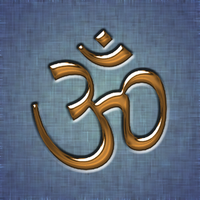- Hindu denominations
-
Practices
Hinduism comprises numerous sects or denominations. The denominations are roughly comparable to different religions. The main divisions in current Hinduism are Shaivism, Shaktism, Vaishnavism, and Smartism. These four denominations share rituals, beliefs, and traditions, but each denomination has a different philosophy on how to achieve life's ultimate goal, Atma Jnana (self-realization).
An established philosophical school within a denomination is called a sampradaya and a traditional lineage of teachers from any sampradaya is a parampara.
The presence of different denominations and schools within Hinduism should not be viewed as a schism, as there was no original unity. On the contrary, there is at present no great animosity between the different "religions" which constitute Hinduism, and among Hindu followers as a whole, there is a strong belief that there are many paths leading to the One God or the Source, whatever one chooses to call that ultimate Truth. Whether Shiva is the same as Vishnu or different from Vishnu is a matter of dispute among adherents but now most keep their disputes private.
Instead, there is a healthy cross-pollination of ideas and logical debate that serves to refine each school's philosophy. It is not uncommon, or disallowed, for an individual to follow one school but take the point of view of another school for a certain issue.
Contents
Smartism
Main article: SmartismSmarthas have free rein to choose whichever deity they wish to worship. They usually worship five deities (pancopasana) or panchadevata as personal formful manifestations of the impersonal Absolute, Brahman. Smarthas accept and worship the six manifestations of God, (Ganesha, Shiva, Shakti, Vishnu, Surya, and Skanda) and the choice of the nature of God is up to the individual worshiper since different manifestations of God are held to be equivalent. It is nonsectarian.
It is the Smarta view that dominates the view of Hinduism in the West as Smarta belief includes Advaita belief (Advaita was revived by Adi Sankara in India) and the first Hindu saint, who significantly brought Hinduism to the west was Swami Vivekananda, an adherent of Advaita. Not till much later, gurus, such as A.C. Bhaktivedanta Swami Prabhupada, and others, brought a Vaishnavite perspective to the West.
In contrast with the Smarta/Advaita belief, the Vaishnavism and Shaivism beliefs teach a singular concept of God best explained as panentheistic monotheism or panentheistic monism.
Prominent Smarta communities:
North India
-
- Saryupareen Brahmins
- Kanyakubja Brahmins
- Saraswat Brahmins
- Utkala Brhmins
- Maithili Brahmins
- Gauda
- Karhade
- Deshastha
- Konkanastha or Chitpavan
- Devrukhe
- Goud Saraswat Brahmins (GSB's)
- Chitrapur Saraswat Brahmins (Bhanaps)
- Rajapur Saraswat Brahminss (Balavalikar)
South India
-
- Havyaka
- Iyer
- Vaidiki Mulukanadu
- Vaidiki Velanadu
- Vaidiki Veginadu
- Vaidiki Telanganya
- Badaganadu
- Hoysala Kannada
- Kota brahmin
- Babboor Kamme
- Arvel Niyogi Brahmins
.
- Vaishya Vanis
Main article: VaishnavismThe Birla Mandir is one of the most famous Vaishnavite temples in India.
Vaishnavism is the monotheistic tradition worshiping Vishnu (or his forms of Krishna and Rama) as the supreme or svayam bhagavan.
The different Vaishnava schools (sampradayas) and the principal teachers (acharyas) connected with them are as follows:
- Rudra Sampradaya: principal acharya -Vallabhacharya
- Brahma Sampradaya associated with Vishnu, who is the para-brahma (Universal Creator), not to be confused with the other Brahma, who is the four-faced god in Hindu religion: principal acharya - Madhvacharya. Gaudiya Vaishnavism is associated with this sampradaya and is associated with Chaitanya Mahaprabhu, International Society for Krishna Consciousness belongs to this sampradaya.
- Srivaishnava Sampradaya associated with Lakshmi: principal acharyas - Ramanujacharya, Vedanta Desikan, Manavala Mamunigal is the oldest Vaishnava sect in India. This sampraday was followed by Vyasa, Parasara, Bodhayana. The linage of Acharya is Lord Narayana, next Lakshmi and then Vishweksenar, Nammalwar, Nathamuni, Uyyakondar, Manakal Nambi, Alavandar, Periya Nambi, Ramanujacharya and finally Vedanta Desikan as per the Vadagalai samprathayam.
The Thenacharya sampradaya Guruparampara (succession of Acharyas) is as follows. Periya Perumal. (Lord Sri Ranganatha, the presiding deity reclining on the serpant bed at Srirangam), His consort Sri Ranga Nachiyar, Senani (Sri Vishwaksenar, The chief commander of all beings), Nammazhwar, Nathamunikal, Uyyakondar (Pundarikaksha), Manakkal Nambi (Sri Rama Misrar), Alavandar (Sri Yamunachariyar), Periya Nambigal (Sri Parankusa Daasar), Emberumaanar (Sri Ramanujar), Embar, Parashara Bhattar, Nanjeeyar, Nampillai, Vadakku Thiruveedhi Pillai, Pillailokacharyar, Thiruvazhmozhi Pillai and finally Manavala Mamunigal.
Both these sampradayas eradicated the caste system in their temples and made Hinduism a secular religion.
- Kumara Sampradaya is the tradition associated with Four Kumaras: principal acharya - Nimbarka, hence Nimbarka Sampradaya
- Vaikhanasa tradition: principal acharya - Vaikhanasa
- Swaminarayan Sampraday - This stems from the Sri Sampradaya
Śaivism
Main article: ShaivismŚaivites are those who primarily worship Siva as the supreme god, both immanent and transcendent.
Śaivism embraces at the same time monism (specifically nondualism) and dualism. It focuses on yoga, meditation, and love for all beings.
Major theological schools of Śaivism include Kashmir Śaivism, Saiva Siddhanta and Virasaivism.
To Śaivites Shiva is both with and without form; he is the Supreme Dancer, Nataraja; and is linga, without beginning or end.
Shaktism
Main article: ShaktismShaktas worship the divine Mother Shakti, in her many forms. These forms include Kali, Durga, Laxmi, and Saraswati.
Shaktism is one of the oldest forms of the Hindu religion (records date back to the Indus valley civilization)[citation needed]. The passage of thousands of years has yielded variations in doctrine, and a plurality of Hindu philosophies has emerged. The Shaivism and Shakta forms are in fact inseparable, as is the description of Shiva from that of Shakti/Sati/Parvati. Vaishanvism also has a connection with Shakta philosophy because Goddess Durga is called Narayani.
Shrautaism
Main article: ShrautaShrauta communities are very rare in India, the most well known being the ultra-orthodox Nambudiri Brahmins of Kerala. They follow the "Purva-Mimamsa" (earlier portion of Vedas) in contrast to Vedanta followed by other Brahmins. They place importance on the performance of Vedic Sacrifice (Yajna). The Nambudiri Brahmins are famous for their preservation of the ancient Somayaagam, Agnicayana rituals which have vanished in other parts of India.
Bhakti movement
Main article: Bhakti movementThe medieval Bhakti movement has had a significant impact on the traditional denominations of Pauranic Hinduism, especially on Vaishnavism. The Alvars were Tamil poet saints of south India who lived between sixth and ninth centuries and espoused "emotional devotion" or bhakti to Visnu/Krishna in their songs of longing, ecstasy and service. Usually twelve Vaishnava saints, who, during the early medieval period of Tamil history, helped revive devotional Hinduism bhakti through their hymns of worship to Vishnu and his Avatars. The collection of their hymns is known as Divya Prabhandham. The Bhakti literature that sprang from these Alvars has contributed to the establishment and sustenance of a culture that broke away from the ritual-oriented Vedic religion and rooted itself in devotion as the only path for salvation. In addition, they helped to make the Tamil religious life independent of knowledge of Sanskrit. [1] As part of the legacy of the Alvars, five Vaishnava philosophical traditions (sampradayas) has developed at the later stages.[2]
In Southeast Asia
Main article: Hinduism in Southeast AsiaFurther information: Hindu Revival in IndonesiaA sect of Balinese Hindus flourished on the nearby island of Java until the late 16th century, when a vast majority of its adherents converted to Islam. Theologically, it is closer to Śaivism than to other major sects of Hinduism.
The term "Agama Hindu Dharma" can also refer to the traditional practices in Kalimantan, Sumatra, Sulawesi and other places in Indonesia, where people have started to identify and accept their agamas as Hinduism.
Newer movements
Further information: Hindu reform movements and Hinduism in the WestFurther information: Bengal Renaissance and Contemporary Sant Mat movements19th to 20th century Hindu revivalist organizations include:
- Arya Samaj
- Brahmo Samaj
- Parisada Hindu Dharma
- Prarthana Samaj
- Ramakrishna Mission
- Sadharan Brahmo Samaj
- Sree Narayana Dharma Paripalana
- Swadhyay Movement
- Swaminarayan Sampraday
- Sathya Sai Organisation
There are also Hindu influences in some new Western religious movements, such as the New Age movement and Wicca.
Hinduism was politicized in the context of the Indian independence movement that has resulted in the rise of Hindu nationalism to a significant political force in the Republic of India.
See also
References
- ^ "About Alvars". divyadesamonline.com. Archived from the original on 2007-06-21. http://web.archive.org/web/20070621230057/http://www.divyadesamonline.com/alwars.asp. Retrieved 2007-07-02.
- ^ Mittal, S. G. R. Thursby (2006). Religions of South Asia: An Introduction. Routledge.
External links
Categories:- Hindu denominations
- Hindu movements and organizations
-
Wikimedia Foundation. 2010.




